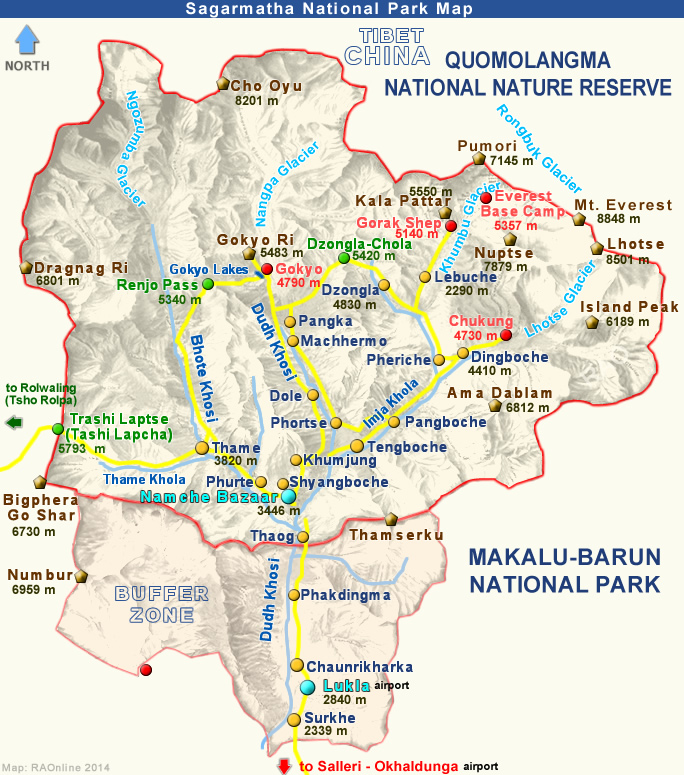 |
Nepal Development |
|
 |
Nepal Development |
|
|
 |

|
Saving Mount Everest Project
|
|
Team of professional clears tons of litter from world's highest peak
|
 |
| Article by Neelima Shrestha, Saving Mount Everest Project |
Thousands of projects are taking place internationally for World Environment Day (WED), but perhaps none as high as the clean-up operation held some 8,848 metres above sea level on Mount Everest. For WED 2011, the Everest Region and the Government of Nepal joined hands with several organisations and volunteers to launch the "Saving Mount Everest 2011- 2012" project.
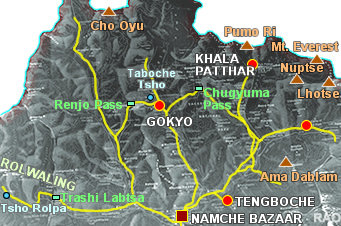 |
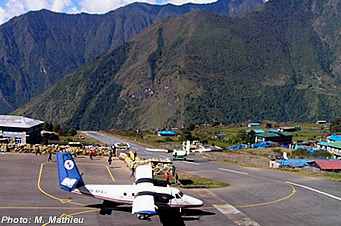 |
| Everest
Region |
Lukla
Airport (2840 m) |
Implemented by the Ministry of Tourism and Civil Aviation of the Government of Nepal, Everest Summiteers' Association of Nepal (ESA) and Eco Himal - Society for Cooperation Alps - Himalaya, the project aims to liberate Mount Everest and its surrounding areas from garbage and set an example for waste management systems which can be replicated across other mountain regions.
Mount Everest is an incomparable icon of nature's splendour. Since the first successful summit expedition in 1953, the stream of visitors to the region has grown exponentially: from about 1,400 in 1972 to 32,124 with some 80,000 back-up staff in 2010 . The region attracts trekkers, mountaineers, researchers, scientists, movie and documentary producers, photographers and visitors from all over the globe.
The enormous increase of visitors to the Everest region has had many positive effects on local economy. However, the heavy pressure of tourism has also taken its toll on the environment, in particular, large amounts of garbage from mountaineering expeditions that have been discarded on Mount Everest and on the trail between the town of Lukla and Everest Base Camp.
To help remedy the problem, a Saving Mount Everest Clean-Up Expedition, headed by the ESA, trekked up the mountain from 15 April to 29 May 2011and brought down a total of 8,110 kilos, or nearly eight tons, of garbage. Comprised of a total of 40 members, including 22 climbers and support staff, the team camped in Everest Base Camp, Camp 1 and Camp 2, respectively, for over a month to collect garbage from the mountain.
The 22 professional climbers collected and carried down the waste from the various points on the mountain, including Base Camp at 5,360 meters, Camp 1 at 6,065 meters, Camp 2 at 6,500 meters, Camp 3 at 7,470 meters, Camp 4 - South Col - at 7,920 meters and South Summit at 8,750 meters. A total of 75 yaks were mobilized to bring the litter down from Everest Base Camp to the village of Namche Bazaar.
The expedition team risked their lives to clean the mountain amidst the harsh and fluctuating weather conditions and successfully met the project's target to collect a total of 8,000 kilos of refuse. The collected waste includes abandoned oxygen cylinders, old tents, ropes, cooking gas cylinders, cans, glasses and remains of a helicopter that crashed in the 1970s.
Of the collected garbage, 3,200 kilos were disposable waste and was handed over to the Sagarmatha Pollution Control Committee (SPCC), the local non-governmental organization that is responsible for managing waste in the region. The remaining waste was carried by zopkyos (local pack animals) to the neighboring town of Lukla on, from where it will be flown to Kathmandu for further separation and disposal.
To ensure long-term effectiveness, a sustainable waste management mechanism will be developed in the world's highest National Park. For this purpose, the team is working closely with the local, national and international institutions and solid waste management experts, including the Solid Waste Management and Resource Mobilization Centre of the Ministry of Local Development, the Government of Nepal and the Technical University of Vienna.
The Government of Nepal has formed the 'Himalaya Environment Conservation, Monitoring and Management Committee' to formulate a new set of regulations on the Code of Conduct for all future trekking and climbing groups, to ensure environmentally sustainable waste-management systems for the entire region. The new environmental regulations for expeditions and trekking groups to the Everest regions are scheduled to come out by autumn of 2011. ESA, EcoHimal Nepal, Mountaineering Association, Nepal Tourism Board and the concerned authorities will support the Government of Nepal in formulating, implementing and monitoring policies for responsible solid waste management in the region.
Furthermore, the project will also look into the quantity of waste produced annually in the region both by the local communities as well as by the visitors, trekkers, mountaineers and present waste management practice in the region and the types of waste produced - organic and inorganic - so as to develop a sustainable waste management mechanism.
UNEP is supporting the Saving Mount Everest project by developing networks with waste management experts and potential donors.

|
| Source: UNEP 2011 |
 |
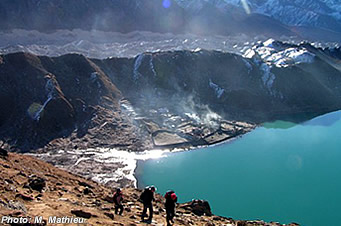 |
| Gokyo
- Glacier |
Gokyo
- Gokyo Ri (4790 m) |
top
|
Information on Nepal |
 |
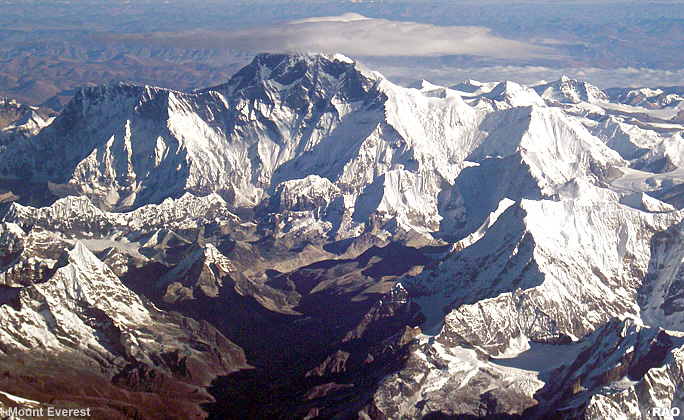 |
| Mount
Everest (8,848 m) and Lhotse (8,516 m) |
top
|
more information
|
 |
|
Links
|
 |
 |
 |
External
link |
 |
UNESCO
World
Heritage
|
NEPAL
|
World
Tour
360°
Views
Kathmandu
Valley, Lumbini, Khumbu-Everest, Chitwan |
|
|




